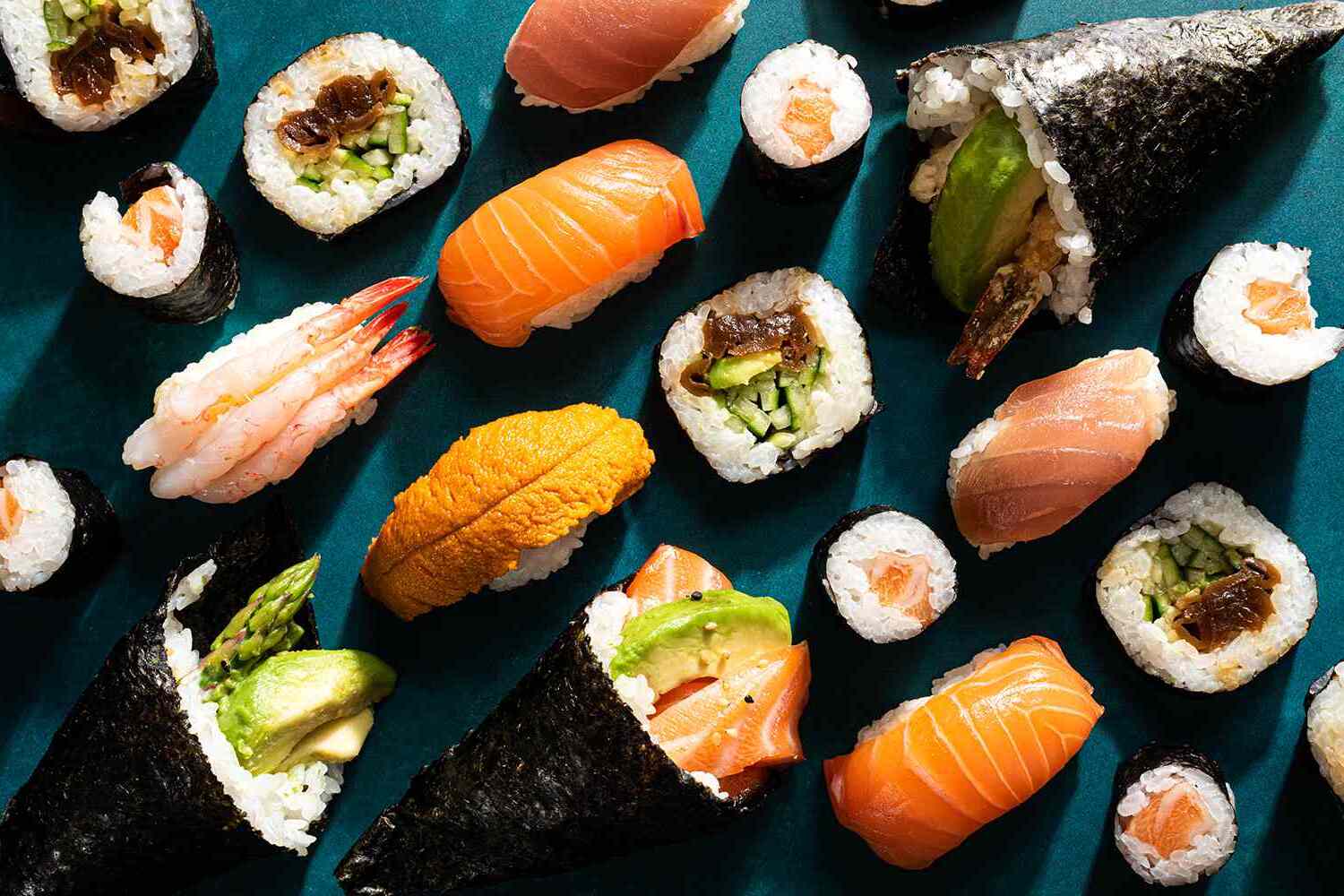
Ever wondered what makes sushi so special? Sushi isn't just a meal; it's a craft, a culinary tradition that has sailed across oceans from its Japanese origins to plates worldwide. But, hey, how much do you really know about those rolls and sashimi you can't get enough of? Whether you're a sushi aficionado or a curious newbie, there's always something new to learn about this fascinating cuisine. From its humble beginnings to becoming a global phenomenon, sushi has a rich history and an array of interesting facts that might just surprise you. So, grab your chopsticks, and let's dive into the world of sushi with 20 facts that will tantalize the taste buds of culinary enthusiasts everywhere. Ready to roll?
Key Takeaways:
- Sushi is more than just raw fish; it's a global cuisine with various styles and flavors, including nigiri, maki, and sashimi, offering something for everyone's taste buds.
- Sushi making requires years of training, with chefs prioritizing sustainability and creating innovative options like vegan and vegetarian sushi to cater to diverse dietary preferences.
What Exactly Is Sushi?
Sushi, often perceived as just raw fish, is much more. Sushi refers to dishes made with vinegared rice, combined with various ingredients like seafood, vegetables, and occasionally tropical fruits. Originating from Japan, sushi has evolved into a global cuisine, offering a wide range of flavors and styles.
The Origins of Sushi
-
Sushi's roots trace back to Southeast Asia, where the technique of fermenting fish with rice was first developed. This method was not only for flavor but also for preserving the fish.
-
By the 8th century, sushi had made its way to Japan, where it underwent significant transformations. Initially, the rice was discarded, and only the fish was consumed.
Evolution of Sushi Styles
-
Nigiri, a type of sushi consisting of a slice of raw fish over pressed vinegared rice, emerged in Tokyo (formerly Edo) in the 1820s. This innovation made sushi more accessible and quicker to prepare, contributing to its popularity.
-
Maki, or rolled sushi, and sashimi, slices of raw fish without rice, are other popular forms that have gained international fame.
Sushi Ingredients and Preparation
-
Sushi rice, known as shari or sumeshi, is a key component. It's seasoned with a mix of vinegar, sugar, and salt to achieve its distinctive flavor.
-
Freshness is paramount for sushi, especially when it comes to fish. Chefs often select fish early in the morning at markets to ensure the highest quality.
Sushi Around the World
-
Sushi has been adapted in various countries, leading to unique creations. For example, the California roll, which includes cucumber, crab meat, and avocado, was developed in the United States as a reverse roll, with rice on the outside.
-
In Brazil, sushi variations include tropical fruits like mango and strawberry, reflecting local tastes and ingredients.
Health Benefits and Concerns
-
Sushi can be a healthy dining option, rich in omega-3 fatty acids, protein, and vitamins. However, concerns about mercury in certain fish and the risk of parasites have led to recommendations for moderation and caution.
-
Pregnant women and individuals with compromised immune systems are often advised to avoid raw fish due to potential health risks.
Sushi Etiquette
-
When eating sushi, it's traditional to use your hands for nigiri and a chopstick for sashimi and rolls. This respects the craftsmanship of the sushi chef.
-
It's considered polite to eat sushi in one bite, allowing the balance of flavors and textures to be experienced as intended.
Sushi and Sustainability
-
With sushi's popularity, sustainability has become a concern. Overfishing and environmental degradation threaten the future of many fish species used in sushi.
-
Many chefs and restaurants now prioritize sourcing fish from sustainable fisheries and advocate for responsible seafood consumption.
The Art of Sushi Making
-
Becoming a sushi chef, or itamae, requires years of training. Apprentices often spend years mastering rice preparation before moving on to cutting fish and crafting sushi.
-
Presentation is crucial in sushi, with chefs paying close attention to the color, arrangement, and garnishes to create visually appealing dishes.
Sushi in Popular Culture
-
Sushi has made significant inroads into popular culture, featured in films, television shows, and even becoming a subject of competitive eating contests.
-
The artistry and skill involved in sushi preparation have inspired documentaries and series, highlighting the dedication of sushi chefs.
Sushi Innovations
-
Innovations in sushi continue to emerge, from sushi burritos to deconstructed sushi bowls, catering to diverse tastes and dietary preferences.
-
Vegan and vegetarian sushi options have also gained popularity, using ingredients like tofu, avocado, and a variety of vegetables to mimic traditional sushi flavors.
Savoring Every Bite: A Sushi Saga
Sushi's journey from humble beginnings to global culinary stardom is nothing short of remarkable. With every roll, slice, and nigiri, it tells a story of tradition, innovation, and the art of eating well. Whether you're a seasoned sushi aficionado or a curious newcomer, these 20 sushi facts have hopefully enriched your understanding and appreciation of this exquisite cuisine. Next time you sit down at a sushi bar, remember the centuries-old traditions and the meticulous craftsmanship that go into every bite. So, here's to more adventurous sushi experiences, exploring new flavors, and making every meal a celebration of culture and culinary artistry. Cheers to the endless discoveries that await in the world of sushi!
Frequently Asked Questions
Was this page helpful?
Our commitment to delivering trustworthy and engaging content is at the heart of what we do. Each fact on our site is contributed by real users like you, bringing a wealth of diverse insights and information. To ensure the highest standards of accuracy and reliability, our dedicated editors meticulously review each submission. This process guarantees that the facts we share are not only fascinating but also credible. Trust in our commitment to quality and authenticity as you explore and learn with us.


